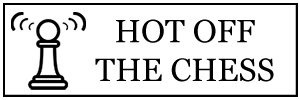
Magnus Carlsen’s challenger for the Chess World Championship will be Russia’s Sergey Karjakin. Karjakin, 26, claimed his place opposite the World Champion, by winning the FIDE Candidates Tournament in Moscow, which has just recently been completed.
Karjakin was in joint lead of the tournament, going into the final round, which was played on Monday 28th March. As fate would have it, he and fellow leader, Fabiano Caruana of America, would play each other in this round, which added to the excitement. Part of the reason for this excitement, was that Caruana had to win the game in order to go forward to play Carlsen as a draw would see him lose on automatic tie-breaks.
The game was a Richter-Rauzer Sicilian, which transposed to Daly-Atalik, Manila 1992. This had been won by Black in 55-moves. Caruana deviated from this game, with his 16…b4 (Atalik had played 16…Qc5) and this, to many, indicated that the American was going to indeed play for the win and not settle for second. He was all in and gunning for the King.
As you can see from the diagram, above, the position was very unbalanced, White castling long while the Black King remained in the centre behind a modest line of pawns. At the moment, this was not an obvious weakness, but long-term that might change. Whether Black could make his Queenside undertaking pay for him, and activate his bishop pair, (a potential plus in this type of position), before White hacks at his centre and launches on the Kingside, was surely going to decide the day.
Caruana actually didn’t do too badly at first, setting up his dark-squared bishop along the c1-h6 diagonal and forcing the White Queen to return to her home square. The problem, though, was his light-squared bishop, which was looking rather out of things stuck on d7. However, fortunately, Karjakin seemed to be playing rather quietly, just getting his pieces where he wanted them. Rather than seeking aggressive options, he was content to just play sensibly and wait for Black to make the play.
Sometimes this approach can work, but it can also be as risky as an all-out attack, and doing it as White always seems to me to be an injustice to having the first move. In Karjakin’s case, I think perhaps he was a little too quiet in places, and this let Black make inroads on the Queenside and get his teeth in to the position.
Diagram 14.2 shows the developments in the position clearly, and quite frankly there looks more for Black than White and Caruana is equal at worst here. This is in stark contrast to the earlier diagram, where White had the better of things. Unfortunately, Karjakin had sat on this rather than looking to use it, and this is often what happens. Once again, the weak link in Caruana’s position was his light-squared bishop and with regard to this, Karjakin was perhaps a little too complicit, with 27.bxa4. (27.e5! Qxe5 (…dxe5 is also plausible) 28.Re1 and there is approximate equality after either …Rxf4 or …Qc5, but personally I prefer Black.)
After 27…Bxa4, Black was doing very well, and had some initiative. He had certainly achieved his objective of opening things up on the Queenside, and his light-squared bishop was now playing something of a part. This, together with the fact that White continued to sit there and wait, put Black ahead in my opinion and I was thinking that there could be drama in this final round. Put simply, the seat opposite Carlsen in November looked to be Karjakin’s to lose, and he seemed to be threatening to do just that. Steadily Black took a grip on the position and White began to look rather impotent.
A turning point, came when White played 36.Qd2, as shown above. The Queen hits Black’s bishop on g2, but this is not too serious because the bishop has viable options of f3 or e4 to withdraw to. Here, Caruana sought to complicate matters, and opted for 36…Re4? instead.
Before getting in to the flaw of this move, I think it is important to understand why Caruana had rejected moving his Bishop. I would assume that it has something to do with his pawn on b4. After either …Bf3 or …Be4, White could take it quite legitimately – though, it seems that Black is still perfectly fine. It seems that …Re4 preserves the pawn by putting another defender on it, (the bishop on g2 is perfectly safe, if White takes it then Black takes twice on d4 of course), and after all candidate moves but one, Black is hugely better.
The one candidate move in question? 37.Rxd5!! which Karjakin found, to Caruana’s dismay. In one move, Black’s position was crumbling. In effect, he had become so focussed on one pawn, that it had cost him another. Not only this, but White’s trump in the position, namely his prowess along the e-file, came in to play in a huge way, and Black’s King, which had looked quite secure it has to be said, now looked extremely threatened.
After 37.Rxd5 exd5 was the only move that didn’t lose drastically, then came 38.Qxd5, as shown in the diagram above. All of a sudden, White has seized the position, with a huge initiative. Mate is threatened on d7 and the Black King is now in a precarious position. Caruana’s only chance to fight was 38…Rd4 but even so, after 39.Qxd4 (39.Re1+? Be4 seems ok for Black) Qxd4 40.Rxd4 White has very much the better stance.
As it was, Caruana opted for 38…Qc7, which was ineffective. There came 39.Qf5 (threatening Qh7+) and here, …Qc6 was probably most respectable after which 40.Qh7+ Ke8 41.Qxh5 would follow, winning by a mile. However, the obviously dejected Caruana played 39…Rf7 and after 40.Bxf7 Qe5 41.Rd7+! (mate in 7 or thereabouts) Kf8 42.Rd8+ resigned.
The other games of the round were drawn rather quickly and uneventfully. This was probably to be expected at this stage. It all meant that Sergey Karjakin won the tournament outright, and has earned his chance to play Magnus Carlsen for the World Chess Championship. The match will take place in New York City in November.
Congratulations to Sergey, who took the decision to withdraw from Norway Chess (18th-30th April) in order to begin preparations straight away. He will be replaced in Norway by Li Chao. One must also feel for Fabiano Caruana, however, who had played a very nice, positive, game of chess, and done lots of things right and very little wrong. Unfortunately, chess can be a cruel game, sometimes, but this very much suits human nature and is why we all love it so much at the end of the day.
Thank you for following along with our coverage, I hope that you have enjoyed it as much as we have enjoyed bringing it to you.
Final Standings After 14 Rounds:
Karjakin – 8½
Caruana, Anand – 7½
Giri, Svidler, Aronian, Nakamura – 7
Topalov – 4½

